Orange brings instant warmth, black adds unapologetic drama, and together they create living rooms that feel both modern and cozy. Interior designers say the key is proportion: use black to anchor the architecture and let orange work as the upbeat accent that guides the eye. Whether you favor sleek minimalism, eclectic boho layers, or industrial loft vibes, the black-and-orange palette adapts through textures, finishes, and lighting, proving far more sophisticated than its Halloween stereotype. Explore the twenty ideas below to discover actionable ways—large and small—to weave these colors into any living room with confidence, personality, and timeless style.
1. High-Contrast Feature Wall
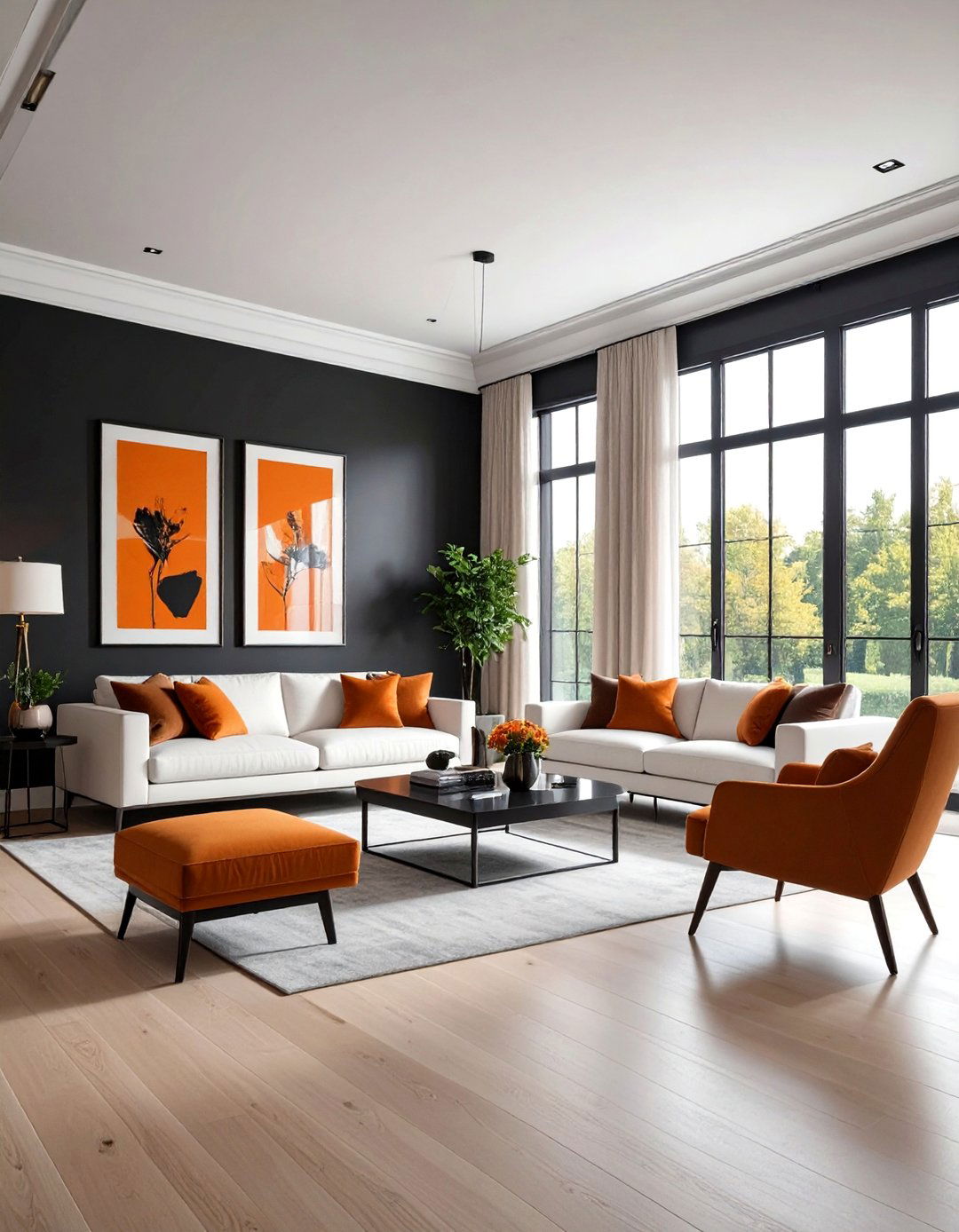
A single matte-black feature wall instantly grounds a living room and sets the stage for vibrant orange accents to shine. Design experts note that dark paint works best when balanced with lighter furnishings and reflective surfaces, which bounce light back into the space and stop it feeling cave-like. Add a strip of slim timber moulding or a picture ledge along the black wall and layer framed prints in burnt-orange hues; the subtle architectural line creates rhythm without clutter. Pops of orange on cushions, pottery, or a single armchair introduce energy and warmth against the inky backdrop while avoiding an overly Halloween vibe.
2. Orange Sofa Against Black Backdrop
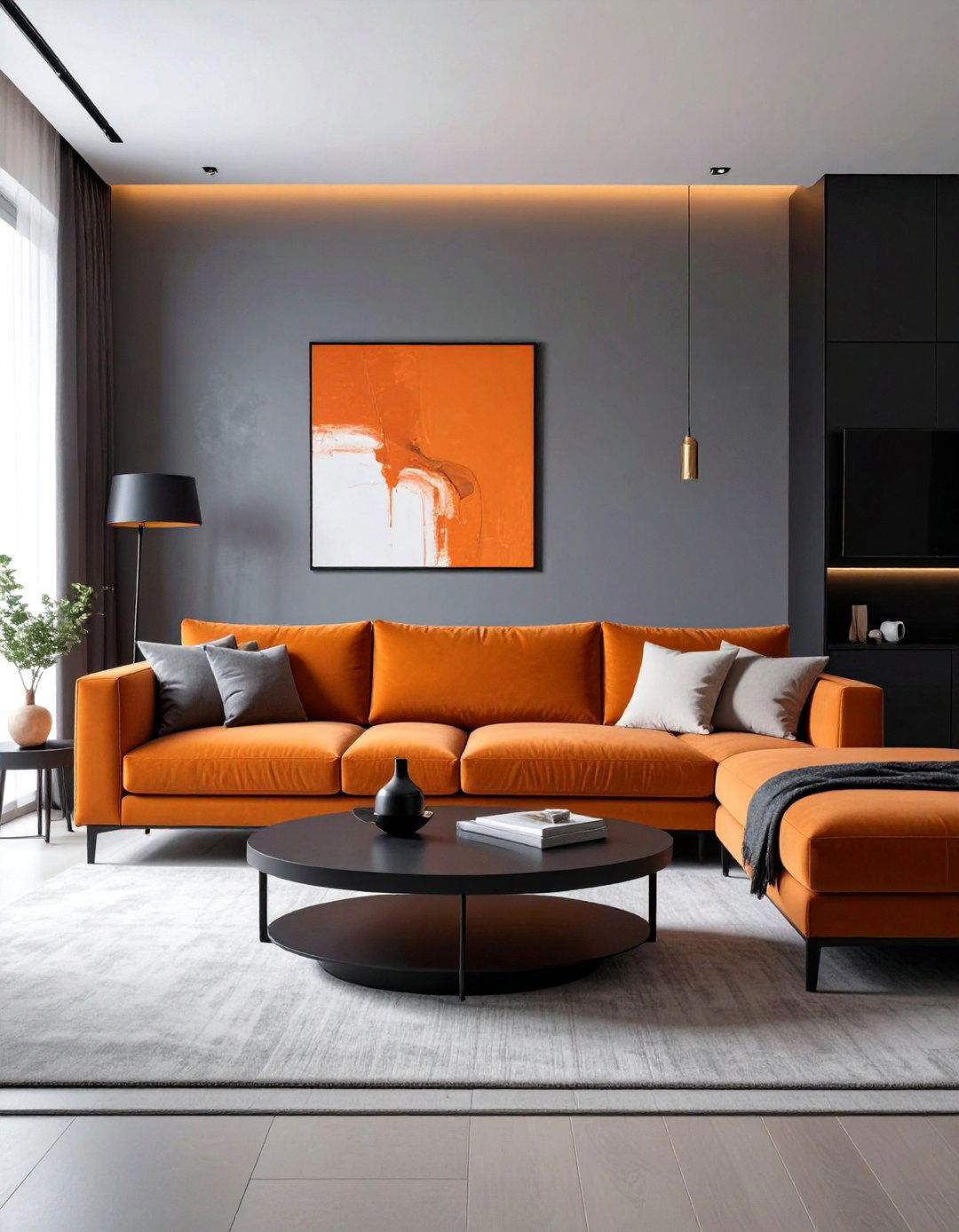
Swapping a neutral couch for a sumptuous orange sofa instantly transforms a black-accented living room from safe to show-stopping. The latest color-trend analyses show burnt-orange upholstery brings an inviting, retro warmth that pairs beautifully with matte-black walls or a charcoal media unit. To stop the sofa dominating, designers recommend grounding it with a low black coffee table, then repeating orange only once or twice—perhaps in an abstract painting or terracotta planter—so the palette feels curated rather than chaotic. Finish the scene with creamy throw blankets for contrast and hidden LED strip lights beneath the sofa base to make the color glow softly after dark.
3. Layered Textiles in Ember and Ink
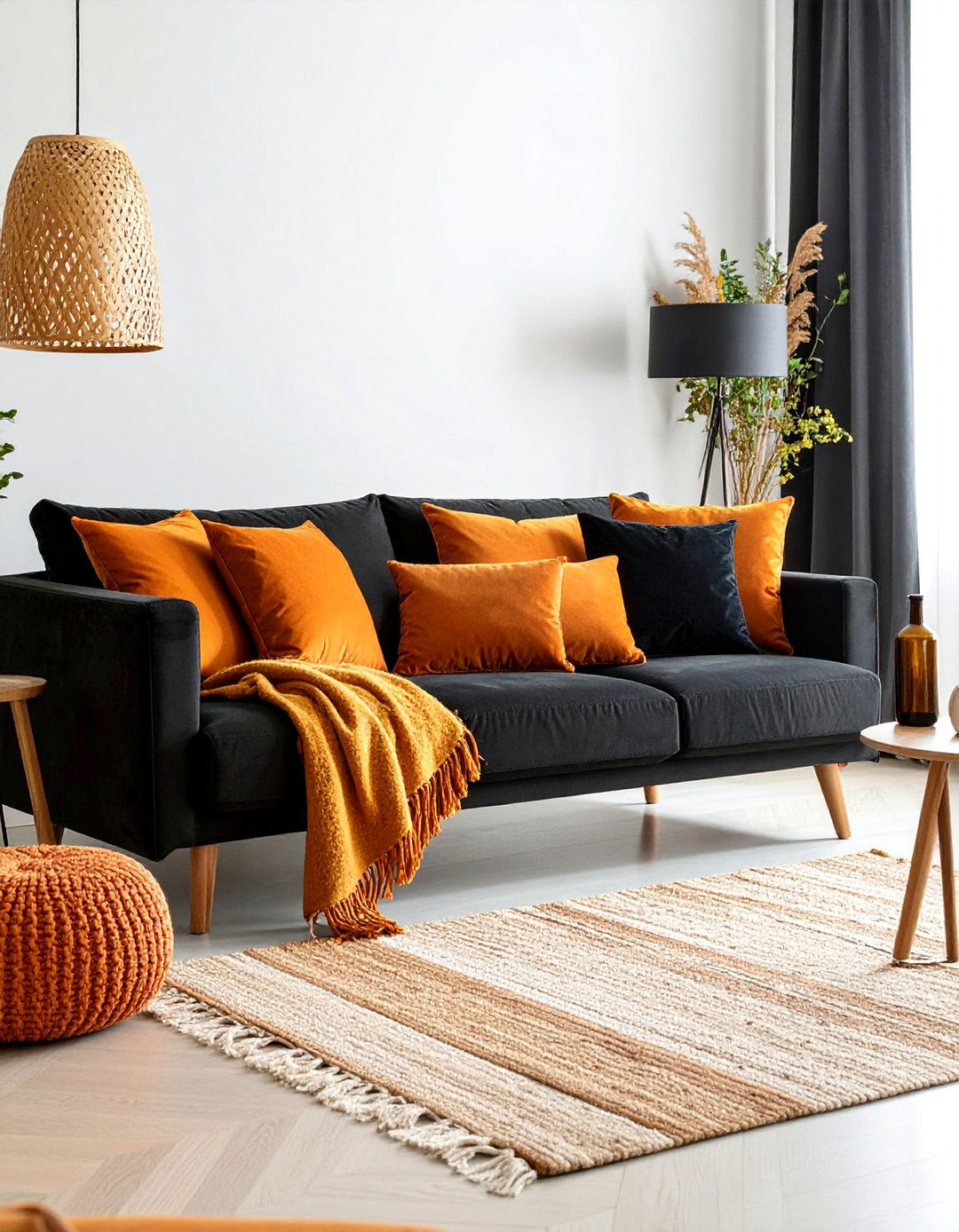
Textiles are the easiest gateway into a black-and-orange living room because they can shift with the seasons. Pair an inky sofa with cushions in varying orange shades—from ginger to tangerine—to create depth without new furniture. Design pros also suggest adding a single jet-black velvet pillow among the warm tones; this repeat of the wall or rug color ties the palette together and adds tactile richness. Complete the layers with a woven jute throw in neutral flax that bridges the colors and prevents visual heaviness. When textures vary—think boucle, linen, leather—the room looks collected and inviting, not theme-park literal.
4. Graphic Artwork Duo
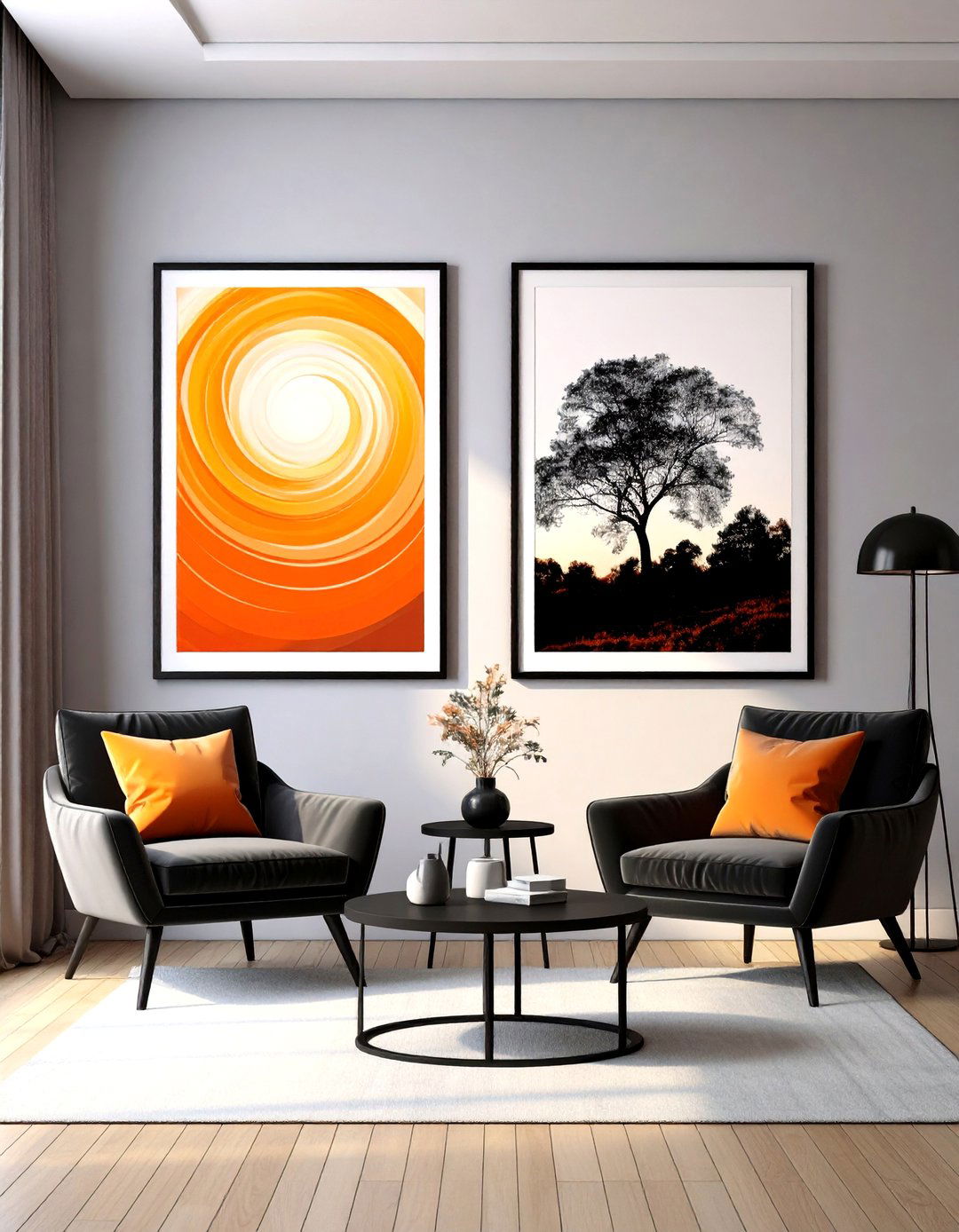
Black-framed art featuring bold orange motifs delivers high impact with minimal commitment. In a living room with mid-tone walls, hang two oversized prints side by side—one abstract swirl of sunset orange, the other a black ink sketch—to create a gallery-like focal point. Experts point out that black frames echo architectural details such as window mullions, strengthening the scheme. Keep mats crisp white so the artwork pops rather than blends. For a budget version, paint inexpensive frames high-gloss black and mount vintage fruit-crate labels that feature orange typography—instant personality and color continuity.
5. Metallic Accents for Glow
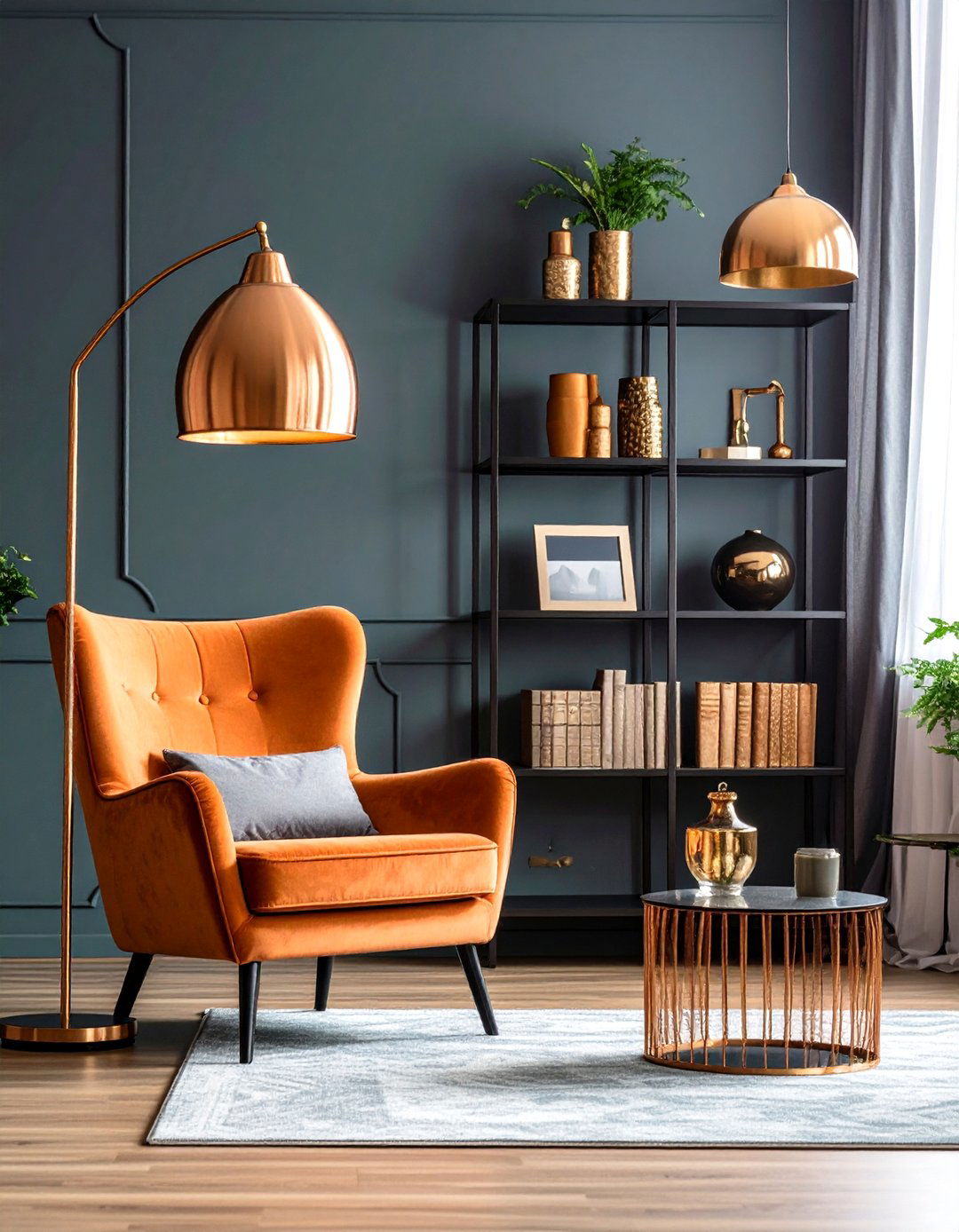
Warm metals—bronze, copper, antique brass—bridge black and orange beautifully, injecting a low-key glow that softens stark contrasts. Lighting specialists stress that black rooms depend on reflective accents to keep the mood welcoming; a hammered-copper floor lamp behind an orange armchair bounces amber light across dark walls for an enveloping evening ambiance. Add slender brass picture lights over black shelving or swap chrome cabinet pulls for brushed gold to echo orange’s warmth without adding another hue. The metallic touches read as sophisticated jewelry, elevating the palette from sporty to luxe while still respecting the color story.
6. Velvet Burnt-Orange Sectional

A plush burnt-orange velvet sectional exudes retro glam yet feels utterly current when set against a crisp black-and-white envelope. Designers advise choosing a sofa with clean, low lines so the vivid fabric sings without overwhelming the living room’s proportions. Echo the velvet’s subtle sheen with a black-lacquer media console and a round marble coffee table that lightens the look. If space allows, float the sectional slightly off a black jute rug—this negative space prevents visual heaviness. Layering a slim ebony side table and a charcoal-edge mirror ensures the eye travels, balancing comfort and chic.
7. Mid-Century Pops of Tangerine
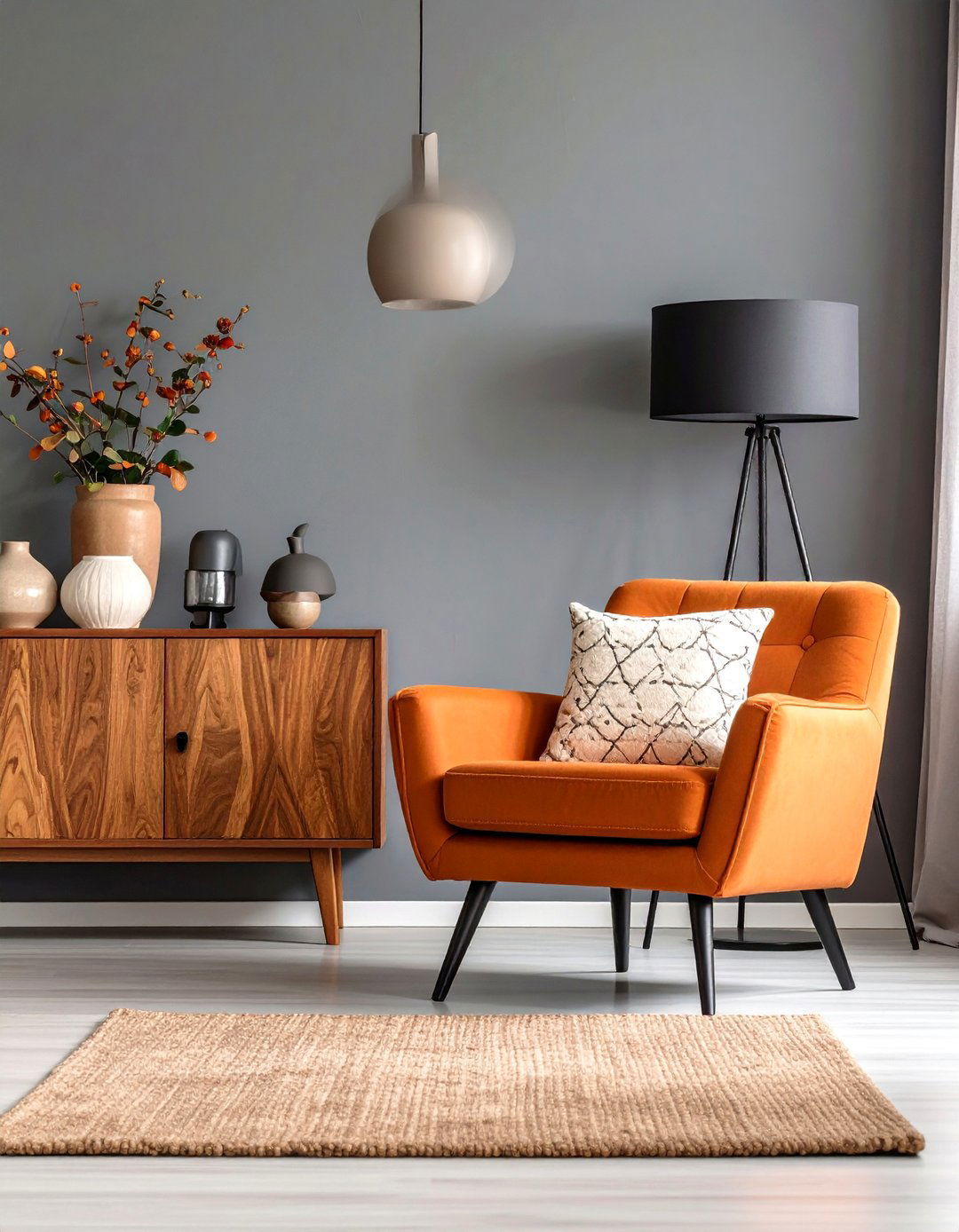
Fans of mid-century style can lean into orange’s optimistic 1960s vibe through accent chairs, geometric cushions, and teak sideboards—all of which pair naturally with black hairpin legs or matte metal lighting. Editors covering color trends note that pairing tangerine upholstery with walnut wood introduces earthy depth and keeps the palette from feeling too graphic. A tapered black tripod lamp echoes chair legs, while an orange-and-cream shag rug anchors the seating area. Keep walls light greige or palest clay so furniture silhouettes and color become the stars.
8. Industrial Loft Vibe
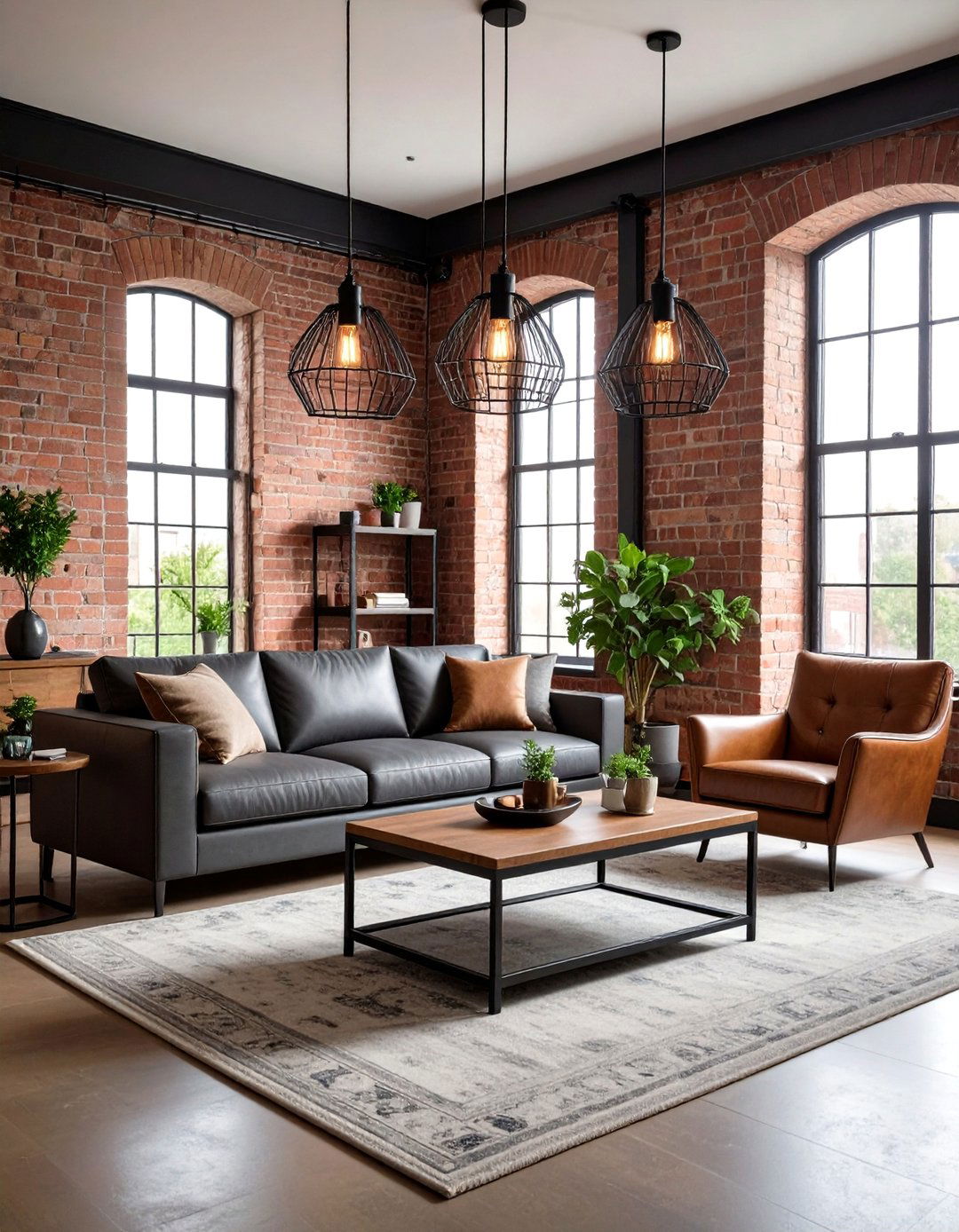
In an industrial living room—think exposed brick, steel beams, and lofty ceilings—orange offers a welcome injection of warmth against black metal frameworks. Start with a charcoal sectional and blackened-steel coffee table, then drape a pumpkin-hued throw over the sofa and add a cognac leather butterfly chair for tonal variety. Edison-bulb pendants with black cages cast amber light that mirrors the orange textiles, unifying old factory bones with cozy modern living. Concrete floors feel less austere once partially covered by a distressed orange Persian rug that hints at history.
9. Art Deco Geometry
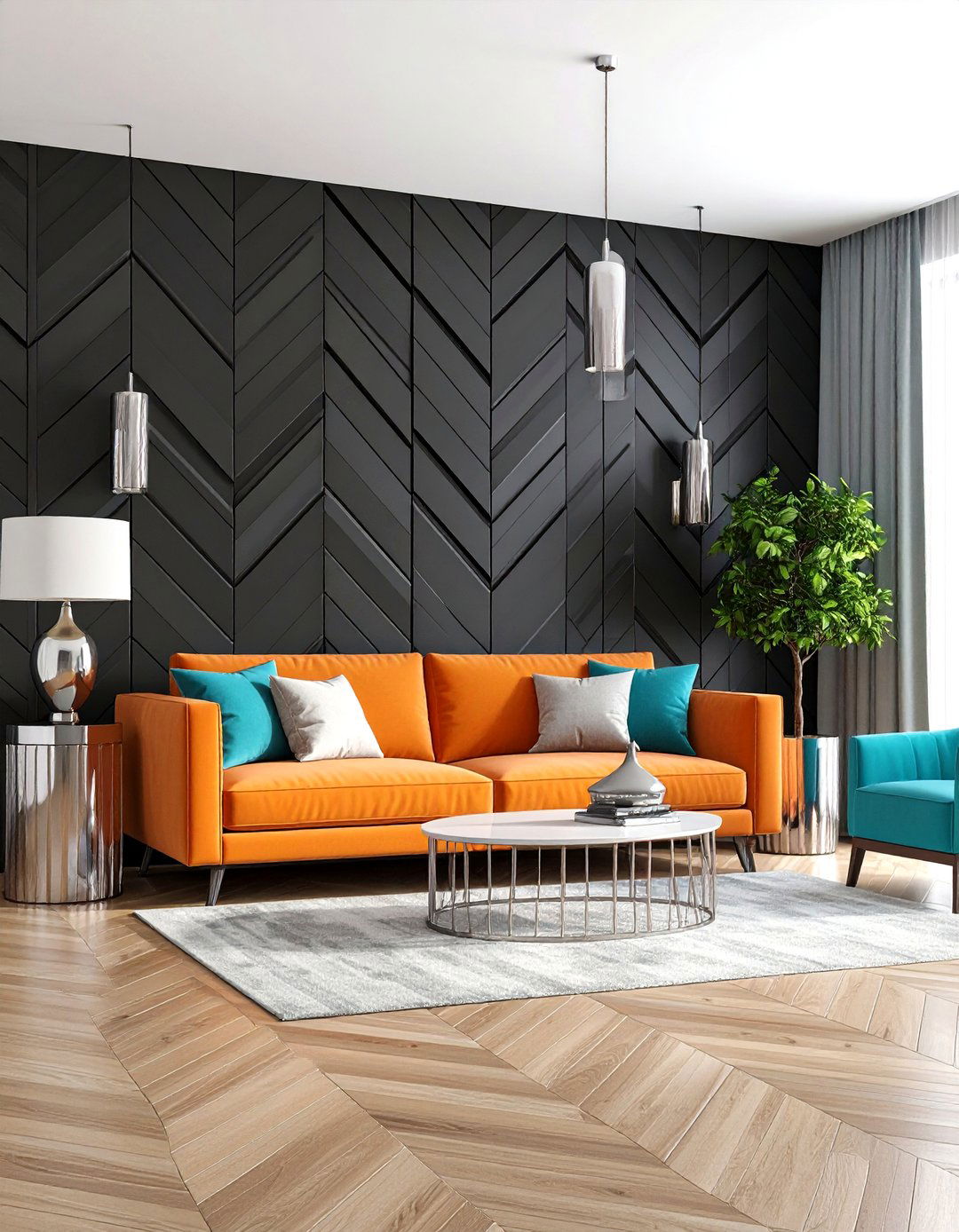
Orange and black are hallmarks of early-twentieth-century Art Deco, where bold geometric patterns and glossy finishes reigned. Restoring the look today can be as simple as installing a black chevron-pattern wallpaper behind a sleek orange settee and topping it with chrome sconces. Design forums highlight that adding a third hue—turquoise or jade—avoids a seasonal “Halloween” impression while staying true to Deco glamour. The color psychology of orange underscores its energizing, sociable vibe, perfect for a cocktail-ready living room. Stick with symmetry—two identical side tables, twin mirrors—to reinforce the era’s orderly elegance.
10. Monochrome Base with Citrus Scatter
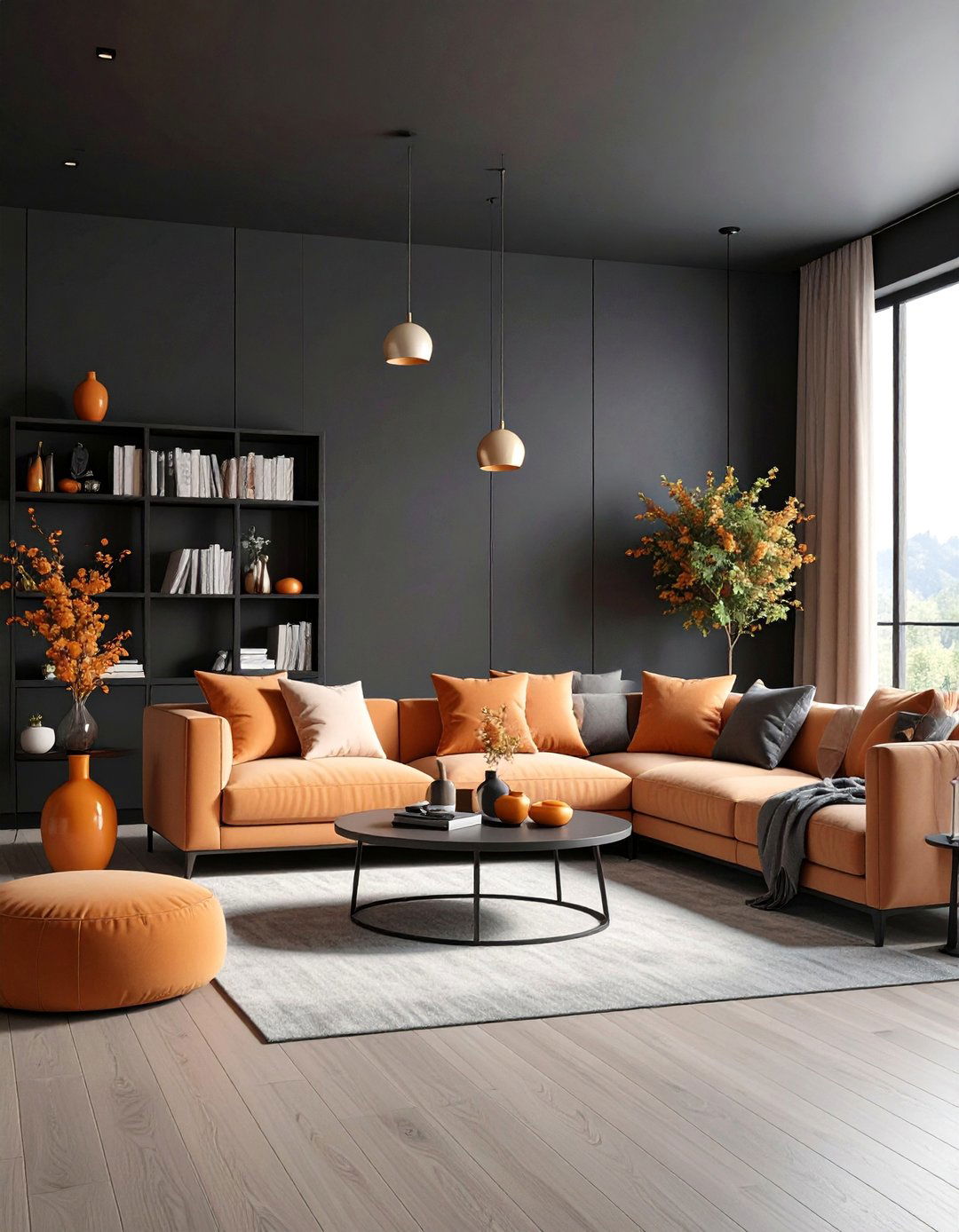
Applying the monochromatic principle to black—walls, trim, and even ceiling—creates a cocooning canvas that magnifies every orange accent you introduce. Design trend watchers explain that tonal layering of one shade builds depth, letting accessory colors sing rather than fight for attention. Scatter cushions, vases, and books in gradations from peach to persimmon around the living room, ensuring each sits against the dark background for maximum pop. For cohesion, leave a whisper of negative space between objects so the eye rests and the room avoids clutter. Expert advice emphasizes keeping orange to roughly 10–15 percent of the palette for balance.
11. Black Built-Ins with Orange Books
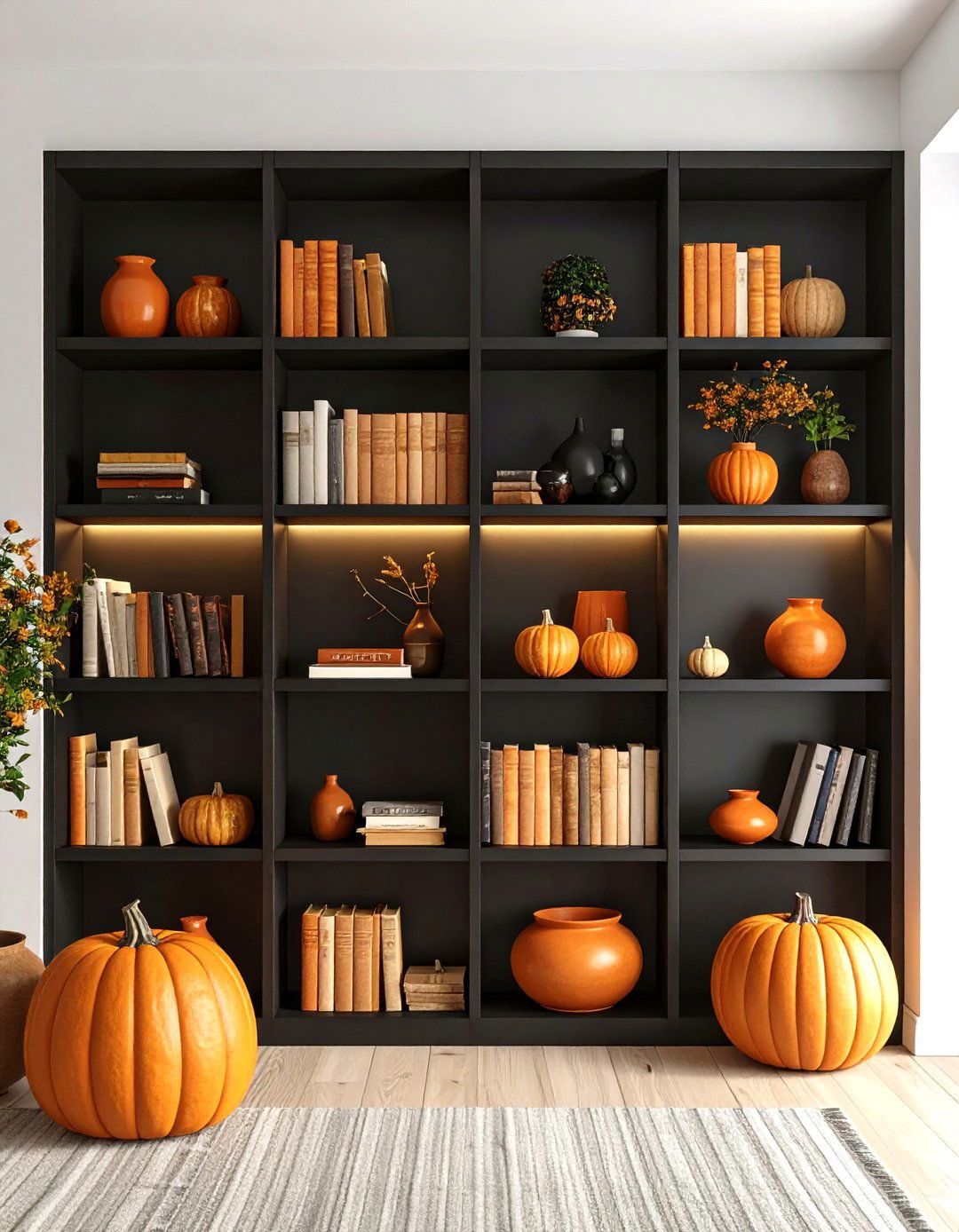
Custom black built-in shelves instantly elevate a living room and provide a ready-made frame for orange moments. Line one entire shelf with vintage paperbacks whose spines sport a vivid pumpkin stripe, or group terracotta pots and burnt-orange ceramics together for visual punch. Designers stress that symmetry and repetition keep dark cabinetry feeling intentional rather than heavy. Warm color groupings also draw the eye upward, making small rooms appear taller. Incorporate soft LED strips along shelf edges to backlight the orange objects, adding depth and a subtle nighttime glow.
12. Orange Rug Anchoring
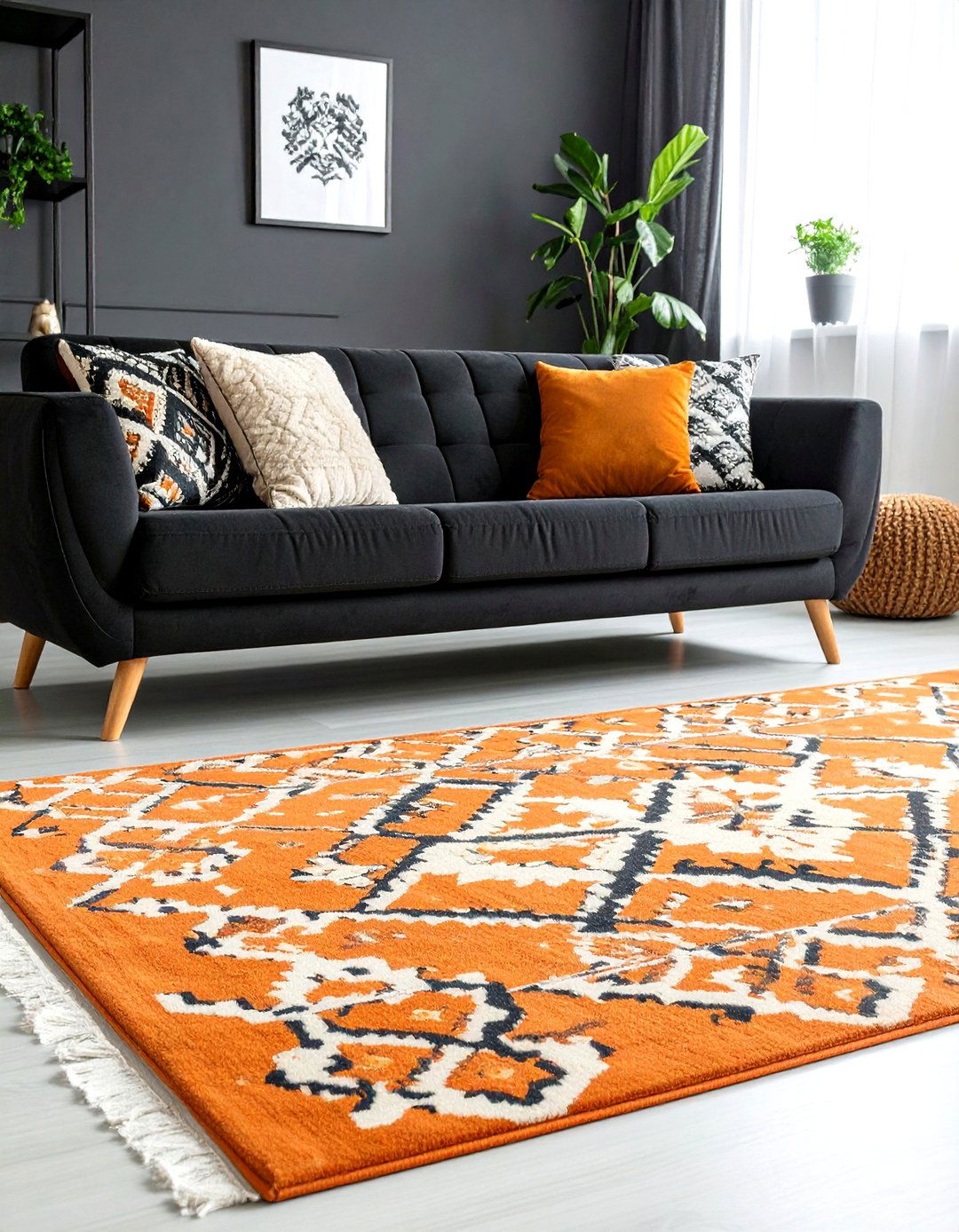
A boldly patterned orange rug can anchor furniture and soften hard black edges in a living room without any paintbrushes required. Color-pairing guides recommend selecting a rug that includes at least two additional tones—cream and charcoal, for instance—so it unites existing pieces rather than competing. Place the front legs of seating on the rug to define a conversation zone; the orange pattern will peek around furniture, reading as dynamic but not overpowering. If walls are already black, choose a rug with a lighter ground to lift the scheme and reflect lamplight.
13. Natural Wood Warmth
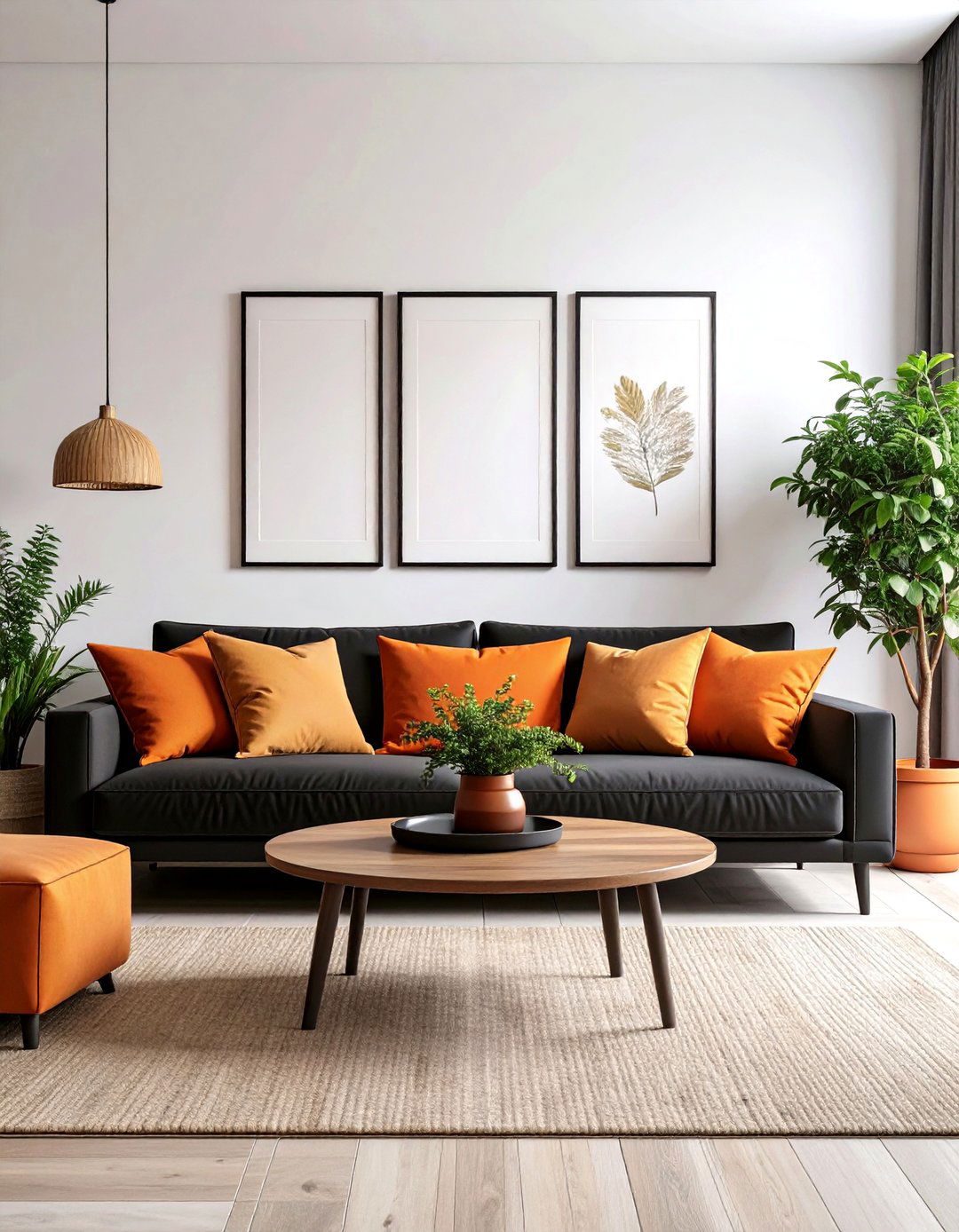
Introducing natural wood softens the graphic tension of black and orange, lending organic warmth that feels timeless. A walnut credenza or oak coffee table brings subtle grain that bridges dark walls and fiery accents. Experts point out that wood’s innate red-orange undertones resonate with burnt-orange cushions or a marigold throw, creating harmony. Black-framed artwork above the credenza ties back to architectural elements, while greenery in simple terracotta pots repeats the earthy note. The result is a living room that feels balanced, not binary.
14. Pattern Play with Charcoal and Citrus
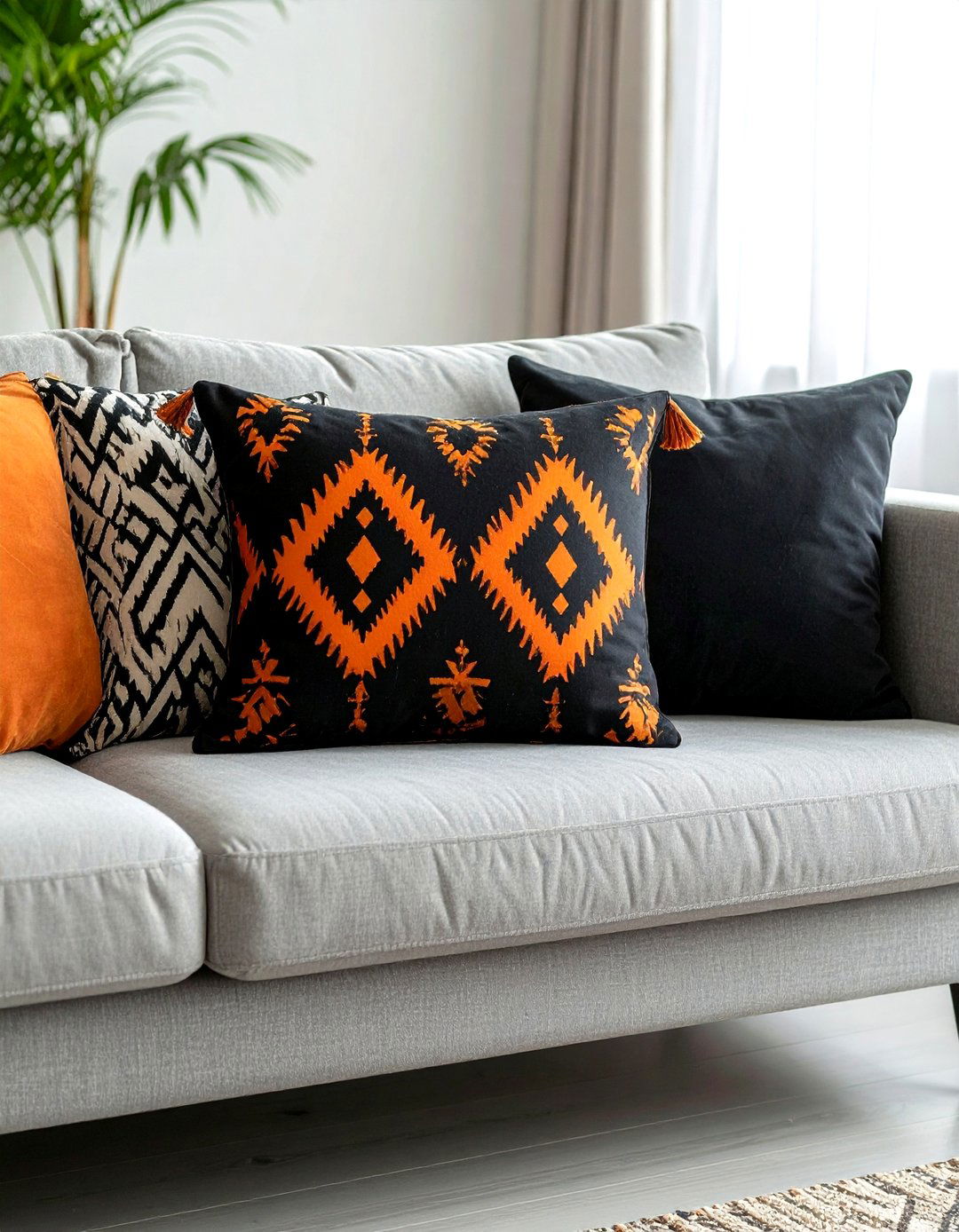
Patterns containing both black and orange—tribal mud cloth, ikat, or retro geometrics—introduce movement that enlivens a neutral sofa. Textile stylists suggest balancing a statement patterned pillow with two solid companions, one black and one pale neutral, for rhythm. Extend the motif through a throw or curtain trim, but avoid covering every surface; negative space prevents overwhelm. If your living room sports interchangeable slipcovers, switch to an orange-on-cream pattern in summer and a deeper rust-and-charcoal in winter for seasonal freshness without new purchases.
15. Mood Lighting Layers

Lighting makes or breaks a black-and-orange living room. Specialists advise combining three tiers: overhead pendants on dimmers, mid-level lamps, and low fireplace or LED strip glow. Warm-white bulbs keep orange fabrics looking saturated rather than neon while bouncing off matte-black walls beautifully. Psychologists note that black can feel oppressive if poorly lit, so ensuring layered illumination helps maintain a cozy, secure atmosphere. Consider installing a black drum shade with a gold interior; when lit, it casts an amber halo that amplifies orange accents and flatters skin tones.
16. Botanical Green Breaks
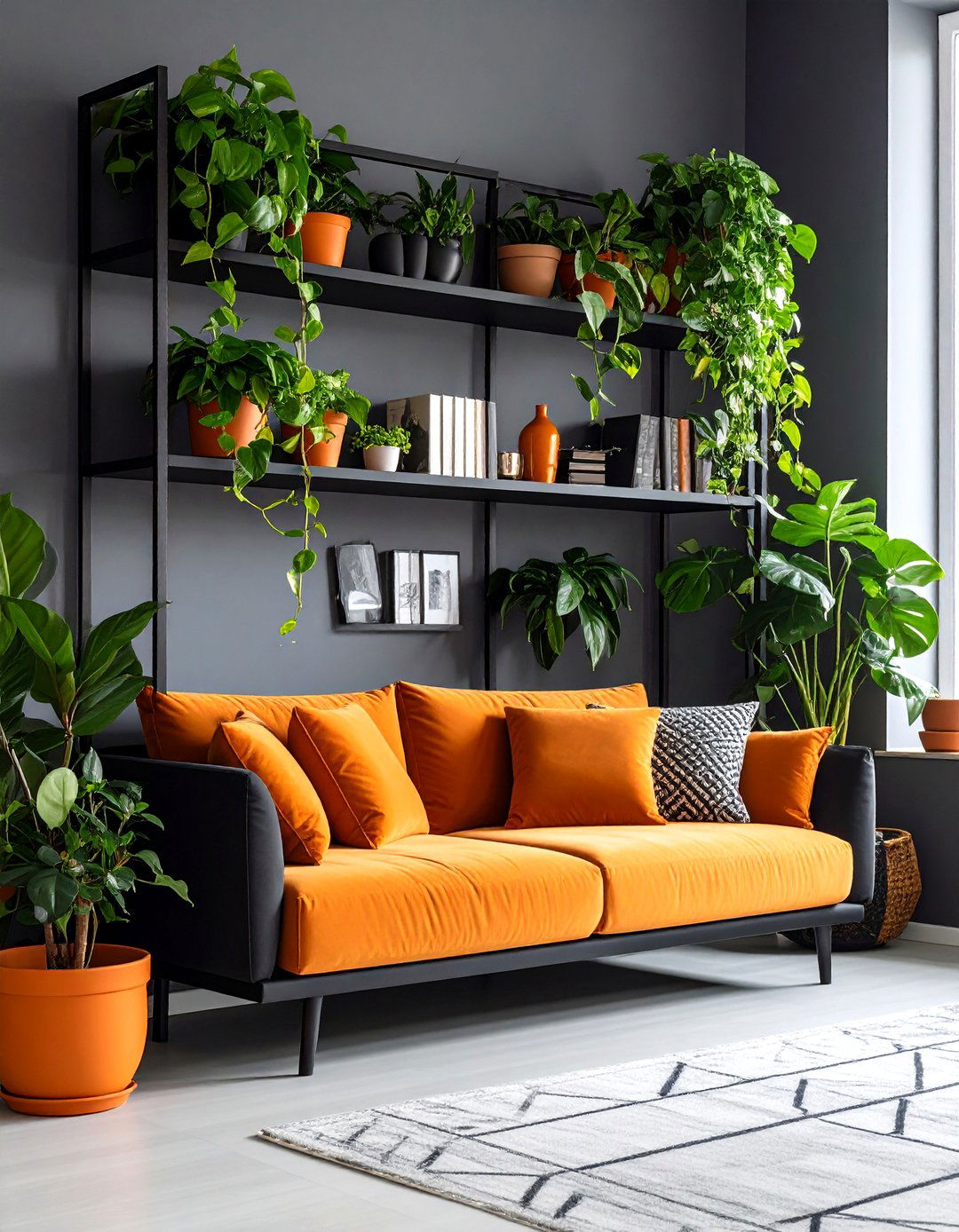
A quick way to stop a black-and-orange living room veering too autumnal is to add vibrant greenery. Research on interior environments shows that houseplants reduce stress and visually freshen heavy palettes. Place a trailing pothos on a black shelf, where its chartreuse leaves create a natural triadic color harmony. Color-psychology studies confirm that green tempers the stimulating effect of orange and the seriousness of black, supporting a balanced mood. Rustic terracotta pots or sleek black planters work equally well, echoing existing tones and textures.
17. Seasonal Swaps for Flexibility
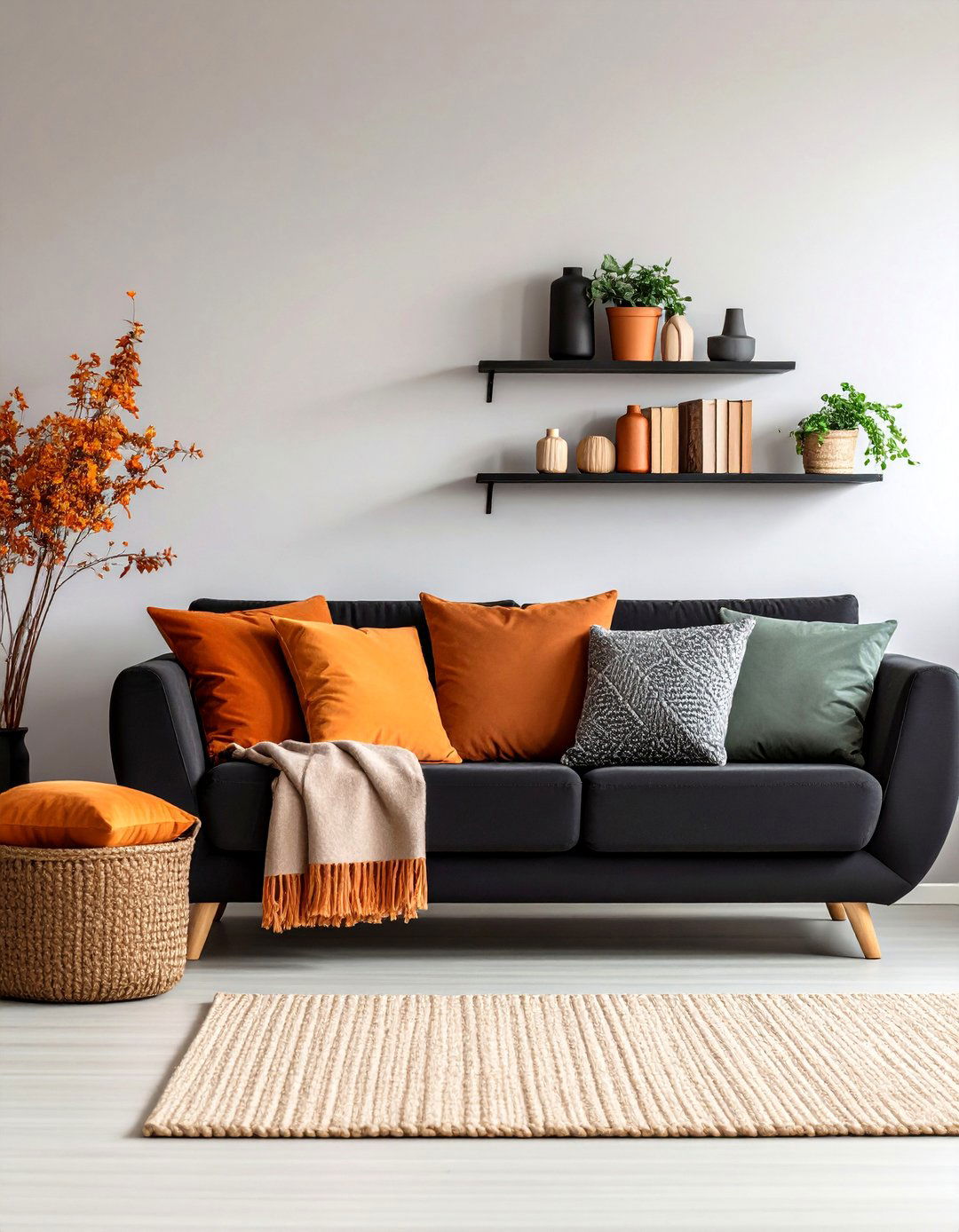
If committing to orange paint feels daunting, adopt a seasonal-swap strategy: keep a storage tote of orange pillows, throws, and artwork ready for autumn and game-day gatherings. Trend analysts suggest orange’s popularity spikes in cooler months because its warmth counters darker days. Replace the accents with sage or blush in spring to refresh your living room while maintaining the black foundation. Small-scale items—candles, vases, even hardcover books—offer high impact for low cost and store flat when not in use.
18. Minimalist Lines, Maximum Impact
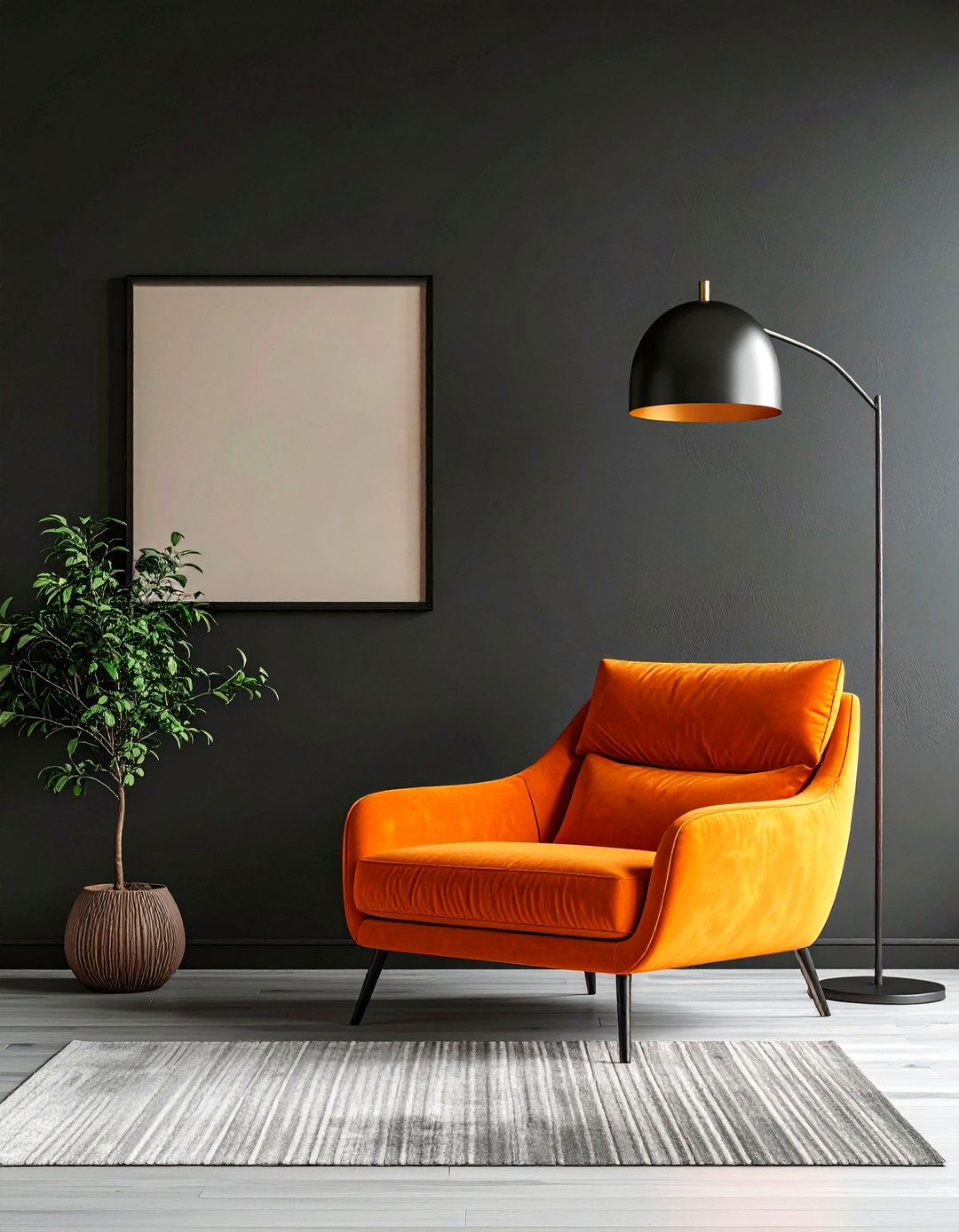
Minimalists can still enjoy black and orange by focusing on streamlined silhouettes and impeccable negative space. A single tangerine chair against a black lime-wash wall becomes functional art, its sculptural lines speaking louder than clutter. Interior advice emphasizes that black palettes work best when furniture layouts are orderly and symmetrical, preventing the room from feeling chaotic. Psychologists associate black with sophistication and power; pairing it with one bold accent however tiny delivers crisp, deliberate style. Keep decorative objects to three: a slim floor lamp, a low plant, and one statement art piece.
19. Vintage Boho Mix
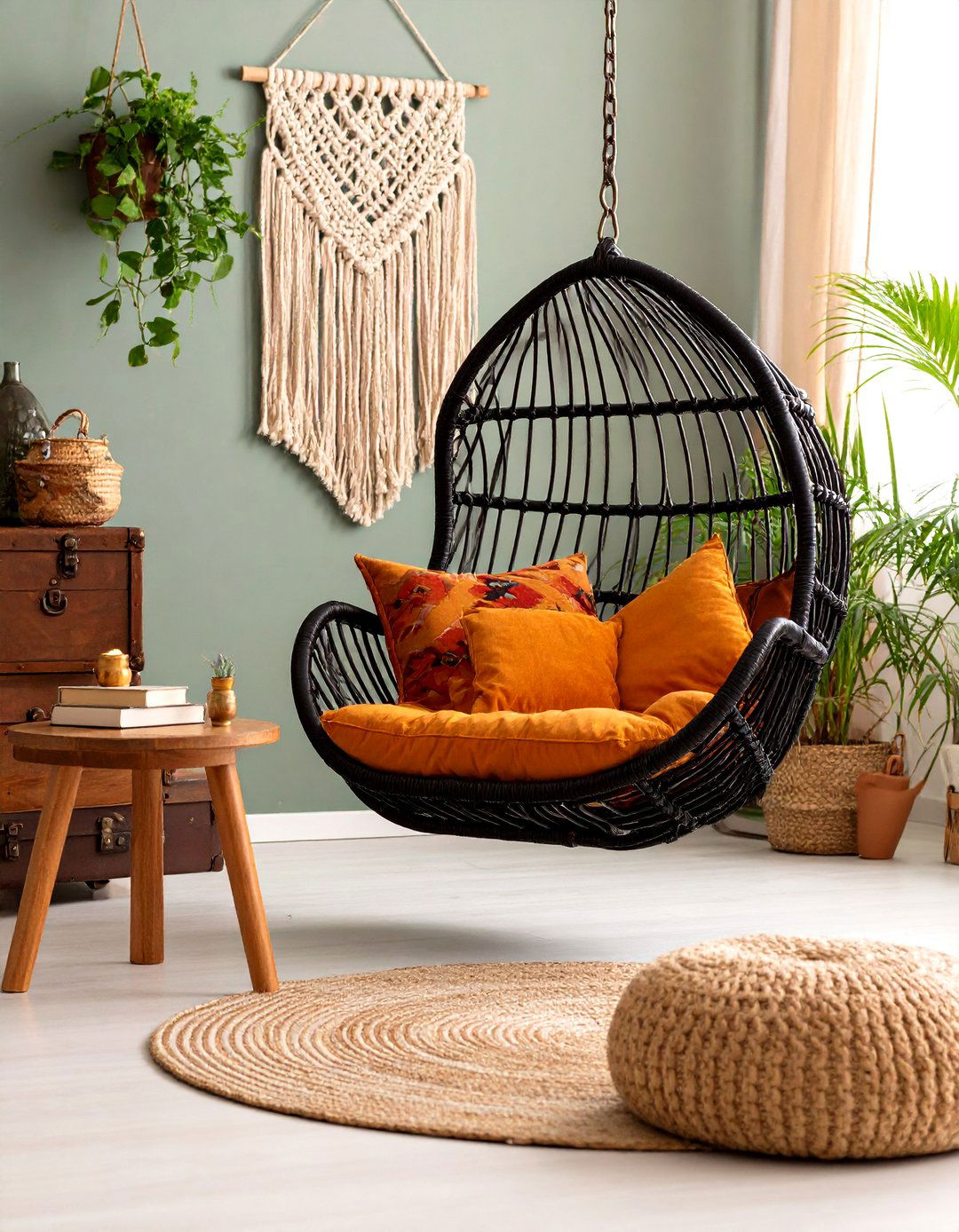
Prefer eclectic flair? Layer patterned orange kilim pillows, a black rattan peacock chair, and stacked vintage trunks as coffee tables for an unstudied boho mood. Case-study lofts show that mixing global textiles with modern black joinery results in spaces that feel collected rather than curated. Temper potential chaos by repeating motifs—a zigzag in both pillow and rug—or limiting metallics to warm brass, echoing orange undertones. A macramé wall hanging in undyed cotton introduces lightness so the dark color block doesn’t dominate.
20. High-Gloss Drama Ceiling
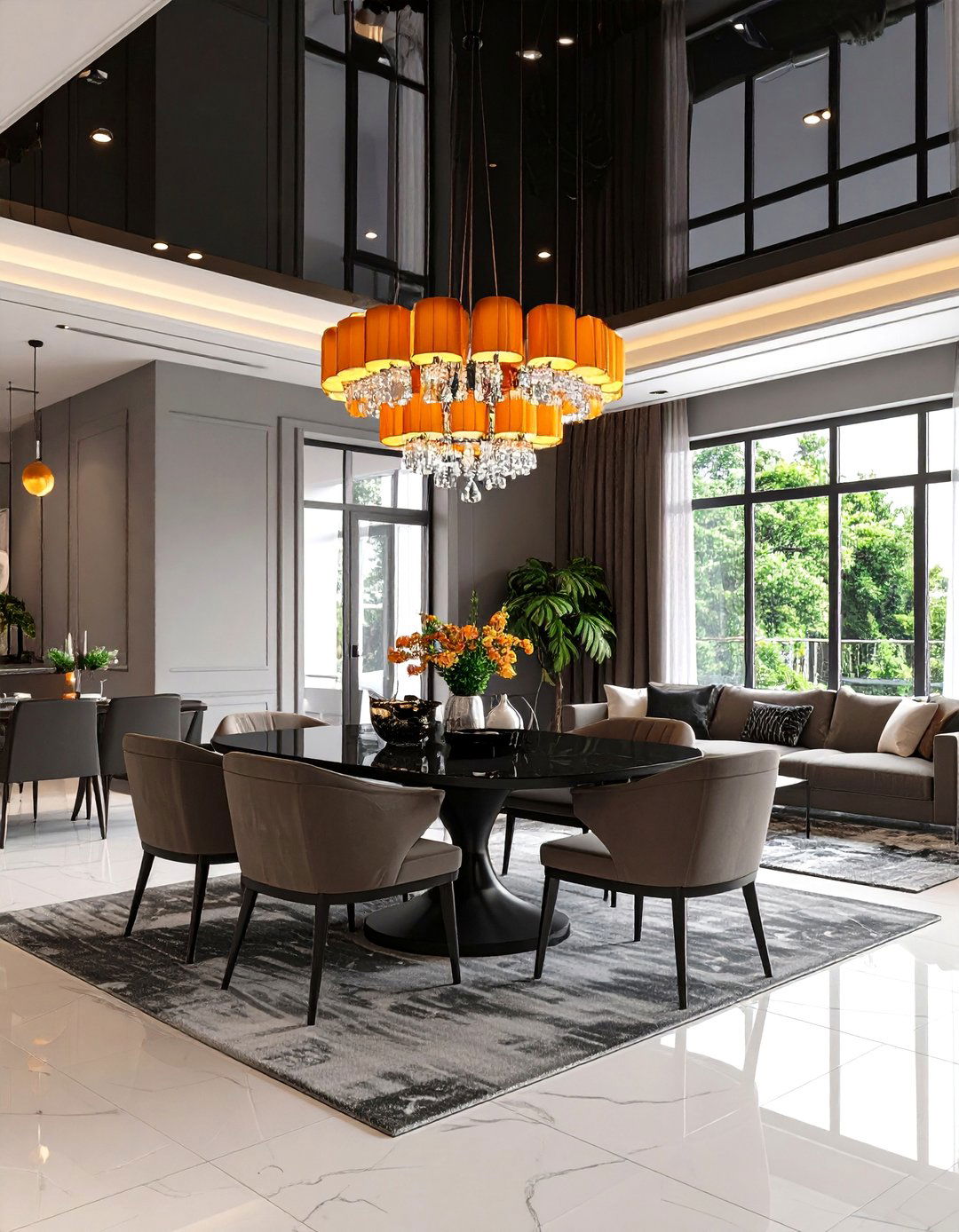
Painting a living-room ceiling high-gloss black adds instant glamour and heightens architecture by reflecting light, almost like a nighttime sky. Designers caution balancing the drama with energizing color below, and a statement orange chandelier or pendant answers perfectly. Orange’s vibrancy draws the eye upward, making small rooms feel taller and enlivening gatherings. Color psychology notes that saturated oranges stimulate conversation and appetite, ideal for open-plan living-dining zones. Keep walls lighter charcoal or dove gray so the ceiling reads intentional, not oppressive.
Conclusion:
These twenty ideas prove that the black-and-orange partnership is far more versatile than a Halloween cliché. By controlling proportions, layering textures, and leaning on supportive neutrals or metals, you can craft living rooms that feel cozy, sophisticated, or playfully retro—often with nothing more permanent than throw pillows or a fresh coat of paint. The color psychology behind orange’s warmth and black’s grounding power ensures the palette will stay welcoming long after trends shift, so experiment freely and let your living room reflect both your boldness and your comfort.





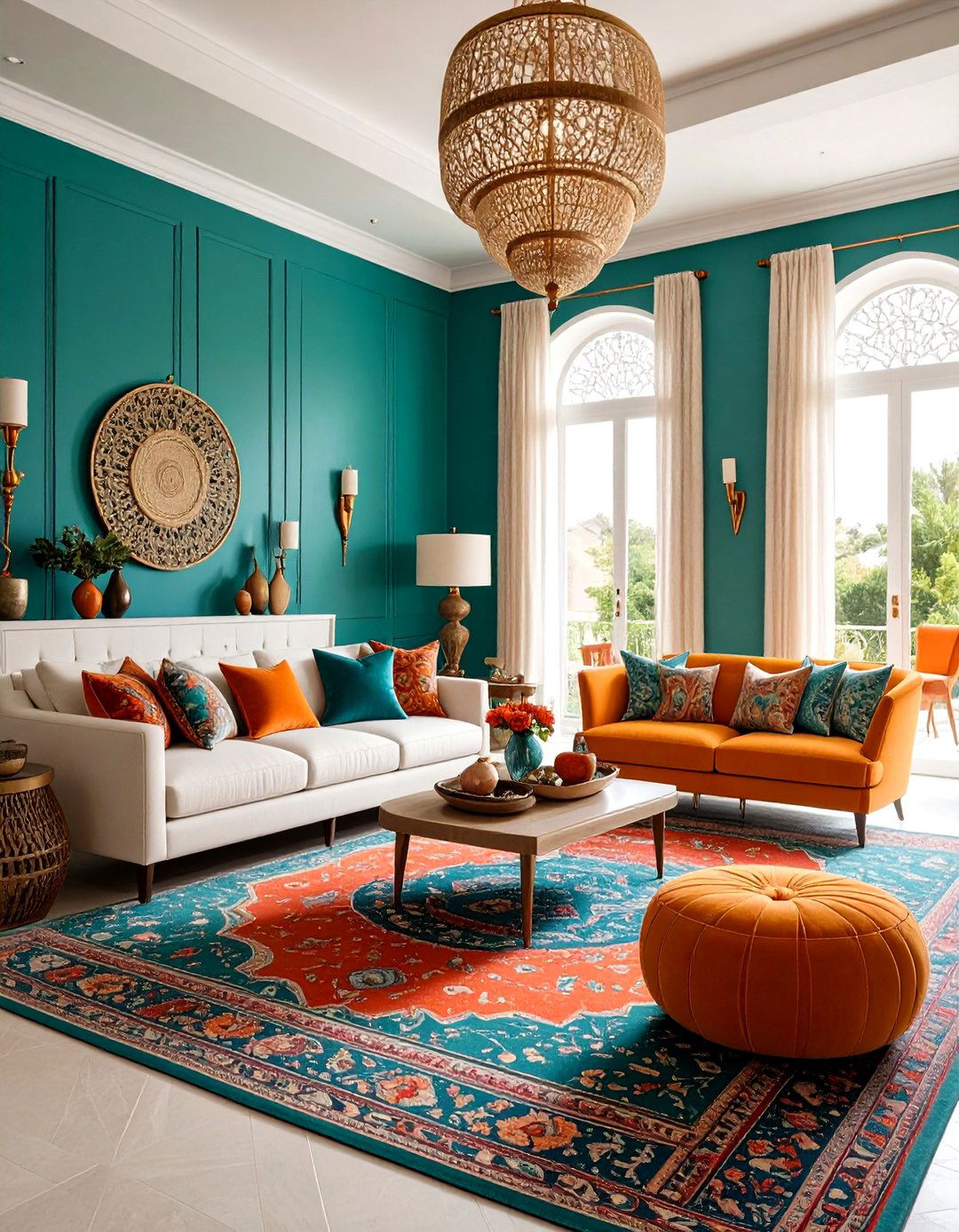

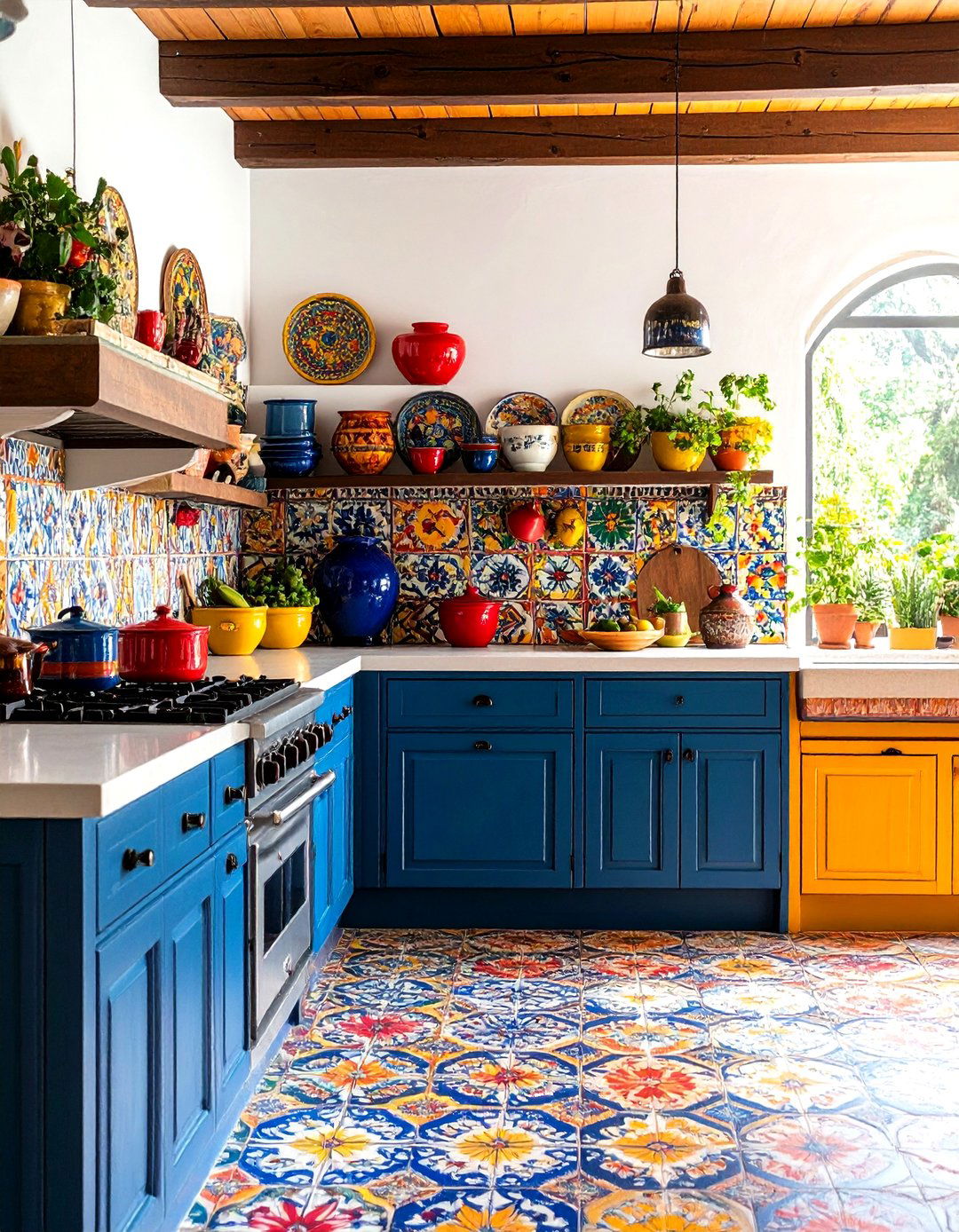
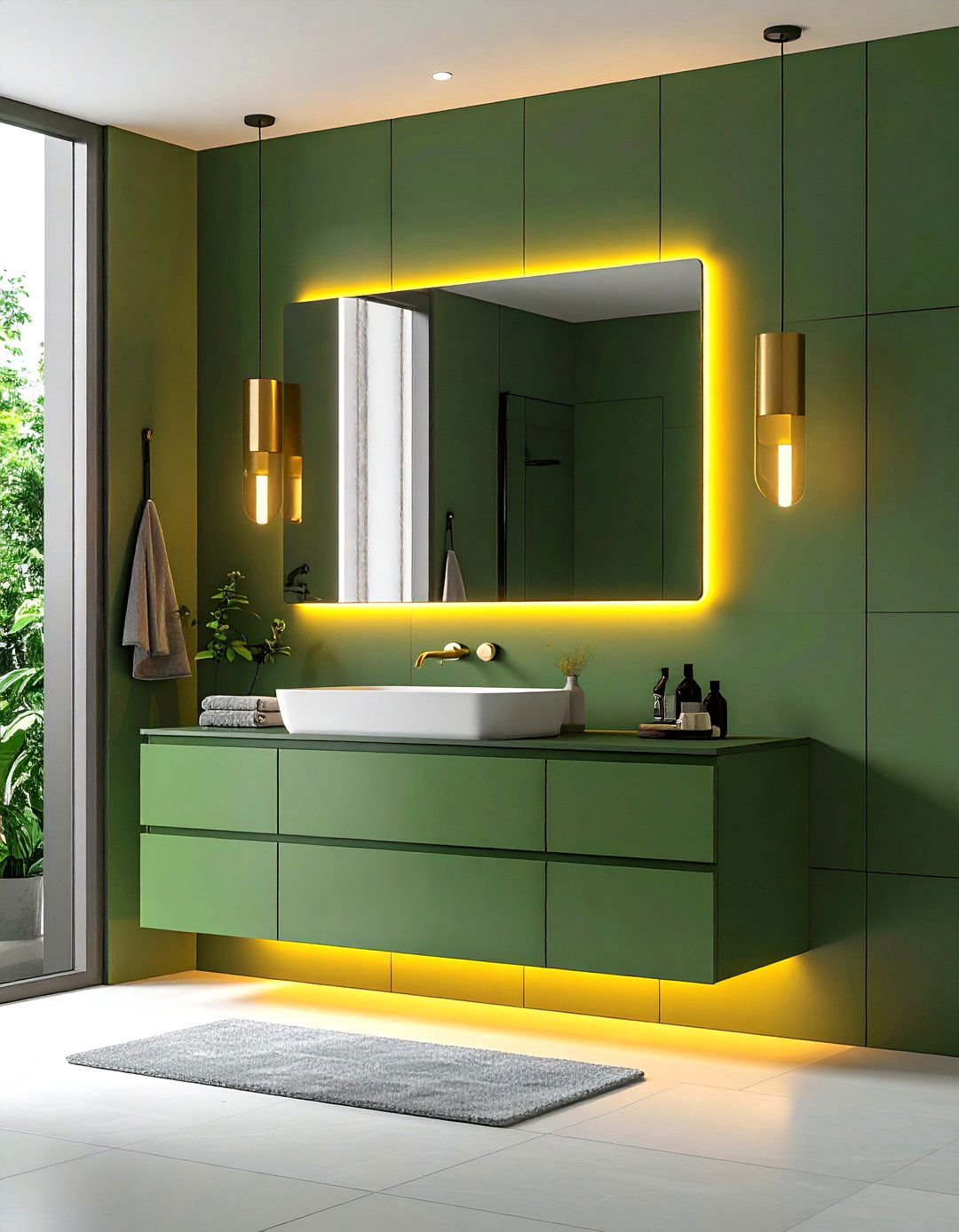


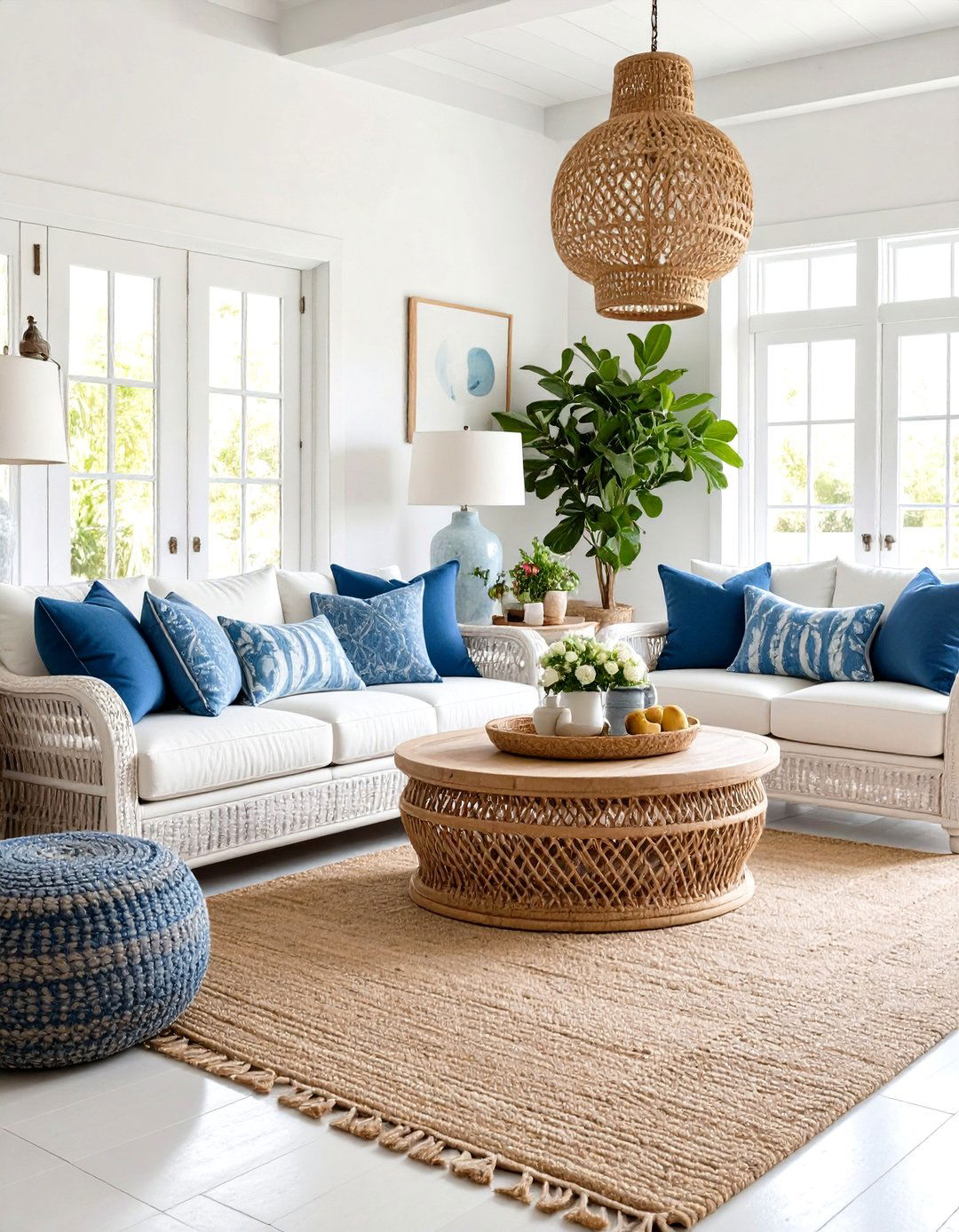
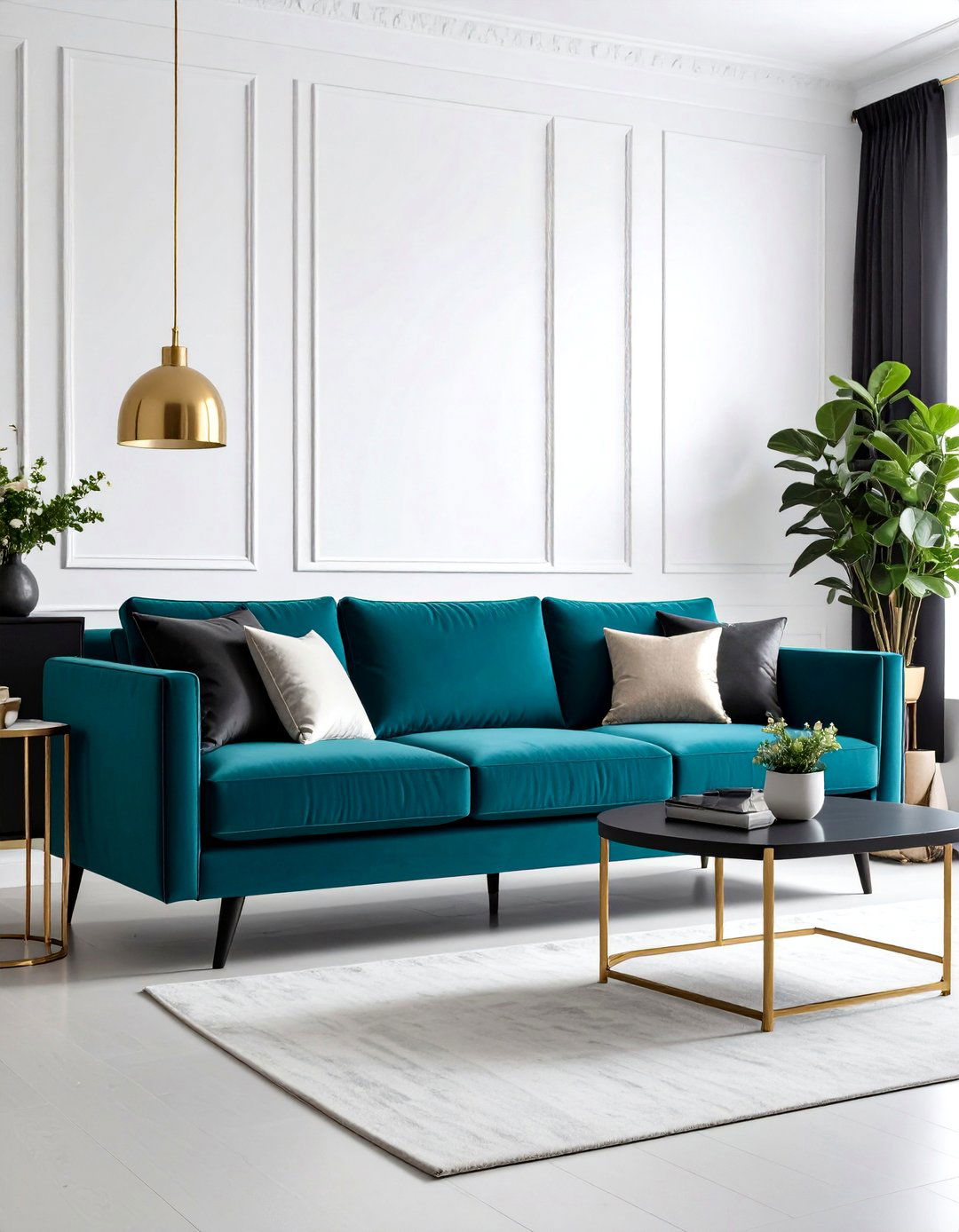
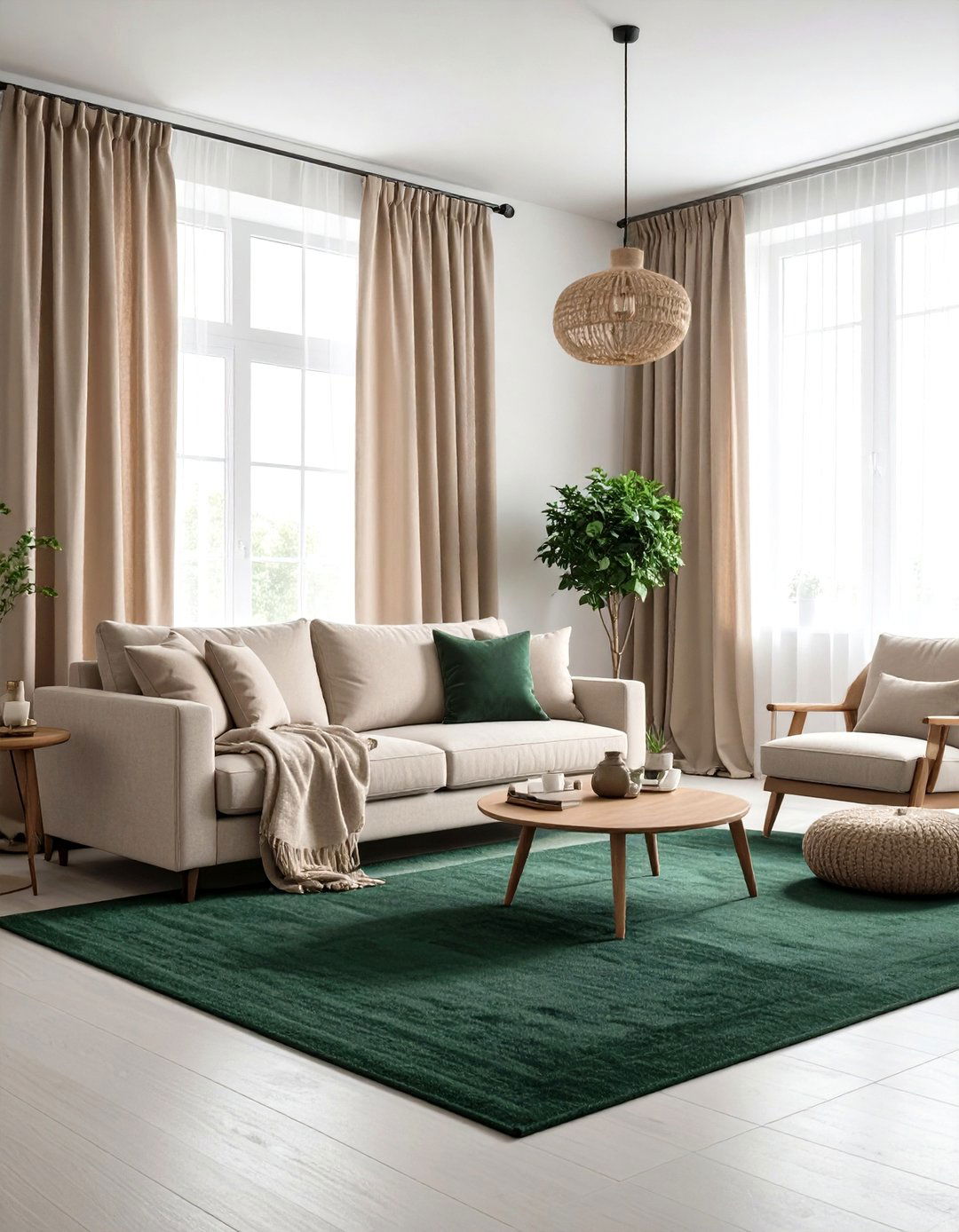
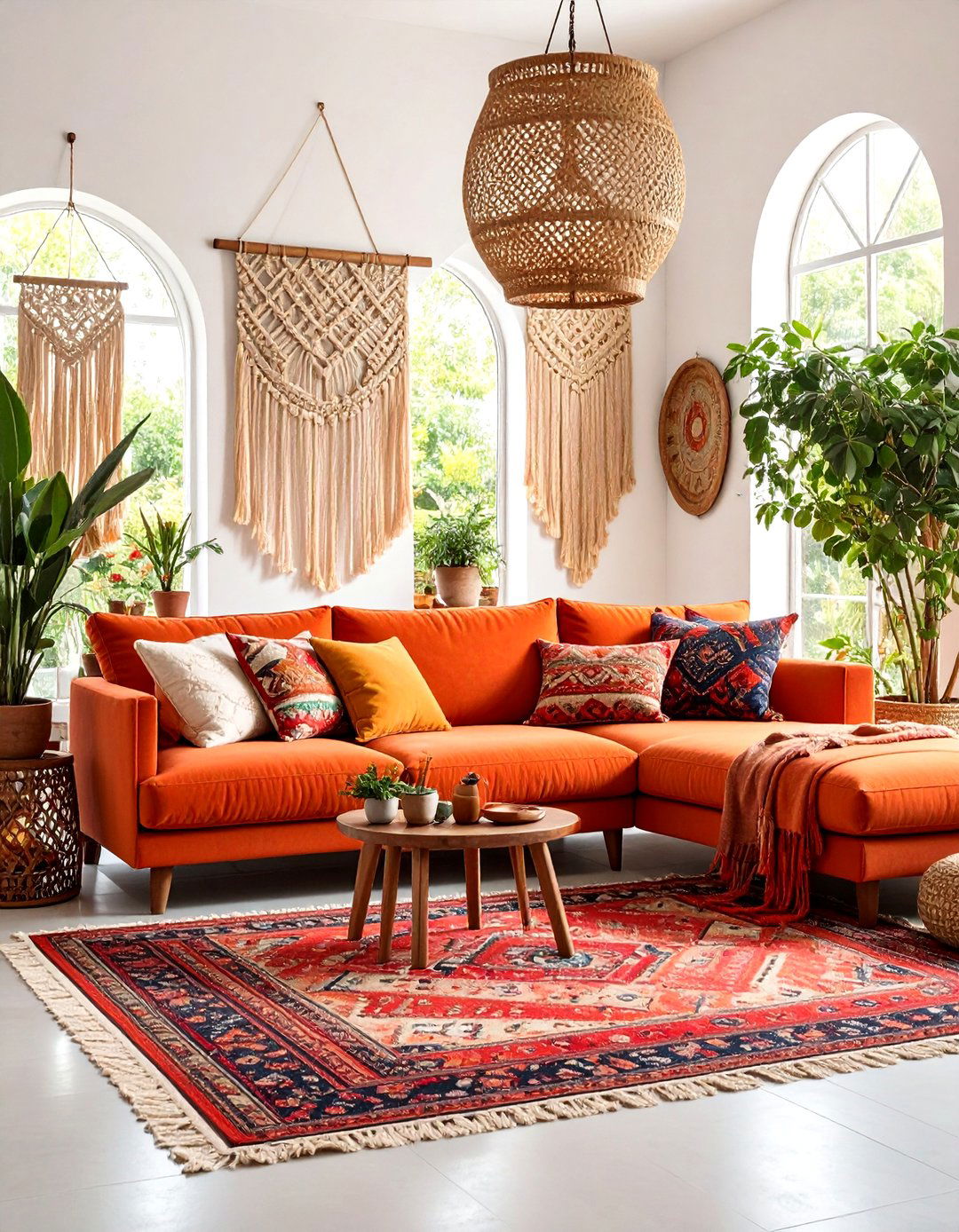
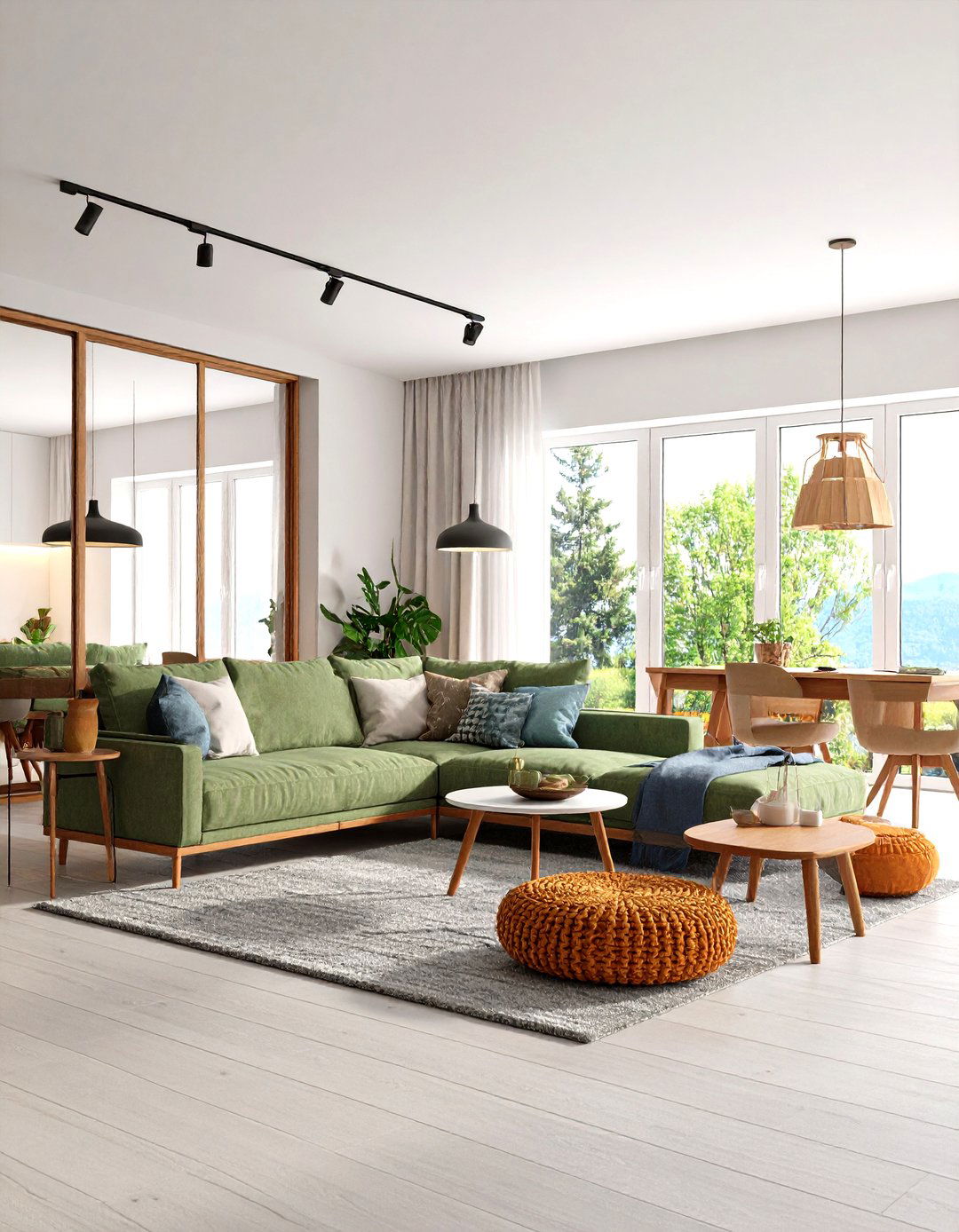
Leave a Reply